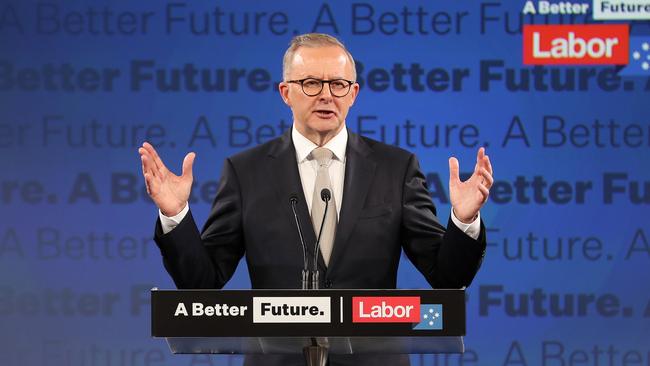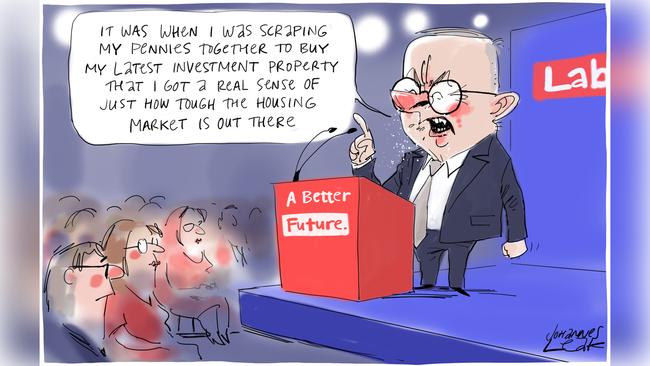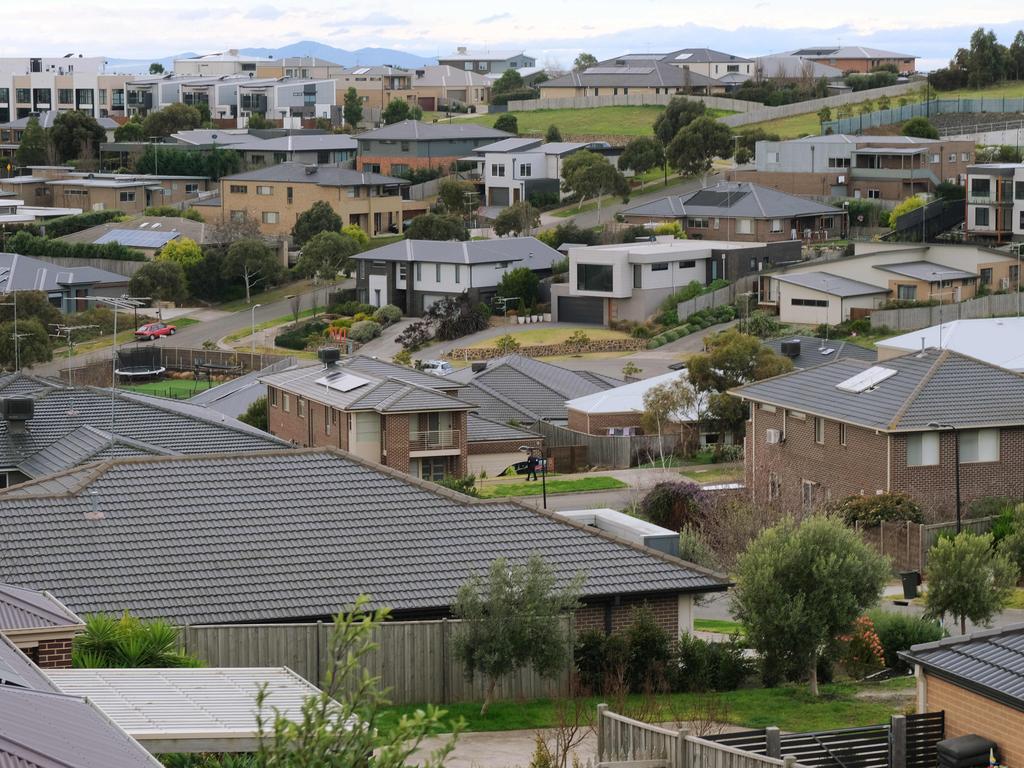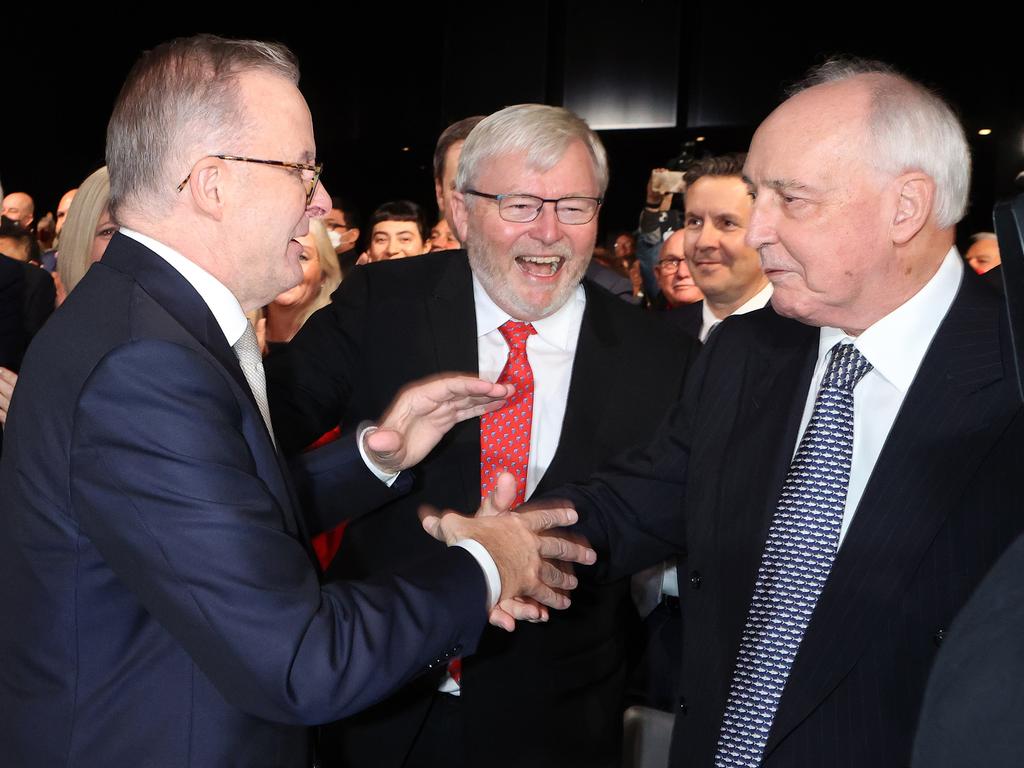
The headline home-deposit scheme, one of the few policies that involved some numbers and could prove to be popular, contains an ominous mix of social appeal and risk to taxpayer funds that undermines Labor’s claims of being a good economic manager.
Putting taxpayer funds into an open-ended, interest-free agreement that depends on continuing growth in the housing market in the face of rising interest rates and a global downturn is a risk not only to government funds but also to the people who take up the offer.
Albanese’s campaign launch was a summation of the general principles and policies he’s announced so far, with a few new initiatives designed to capture some attention, particularly in Western Australia, but fell well short of the past “great Labor reforms” he extolled at length in Perth.
The specific new “announcements” Albanese made were a $1bn fund to help resources stay in Australia to manufacture electric batteries; a $2.50 improvement in the Coalition’s $10 cut to medicines on the Pharmaceutical Benefits Scheme to a maximum payment of $30 for a script; investment and incentives for electric vehicles; adding a gender pay gap objective to the Fair Work Commission, and; the $329m housing scheme to help individuals earning up to $90,000 a year to buy a home.
The $1bn resources fund was one of many Labor promotions aimed at the mining economy of WA, the cut to PBS script costs was aimed at trumping the Prime Minister’s Saturday announcement and the various wages and fair pay allusions were all part of Labor’s campaign to lift wages.
The standout was the Help Buy Scheme, which would provide equity assistance to 10,000 homebuyers a year with federal government payments of up to $380,000 on a near million-dollar house in Sydney.
Aimed at low- to middle-income earners – up to $120,000 taxable income for couples and $90,000 for singles – the scheme goes beyond the Coalition’s deposit-guarantee scheme and previous first-home buyer grants.
Albanese is proposing that the federal government provide up to 40 per cent equity on a house valued at $950,000 in Sydney with just a 2 per cent deposit – a saving Labor says will be up to $380,000 including some other cost cuts – which will be interest-free and indefinite. The federal government will get the equity investment back when the house is sold based on capital appreciation and share of the increased equity.

Housing groups have welcomed the plan, especially the idea of trying to co-ordinate land supply and development costs, and it is likely to prove popular among younger voters and older women on low incomes who are facing the almost impossible task of buying a house and fulfilling the “great Australian dream”, as Albanese put it on Sunday.
It certainly puts Albanese-Labor at the opposite end of Bill Shorten’s plans to do away with negative gearing for property investment at the last election.
But, popular as it may be, the implementation of such a policy contains real risks for parties on both sides of the agreement. The scheme smacks of a Clintonesque social desire to put people on lower incomes into their own housing whatever the cost and risk.
There is a core principle involved that is different to previous Labor and Coalition homebuyer support schemes, which have involved grants or guarantees, and that is the taxpayer will be investing in private residential real estate through an equity offer that doesn’t charge interest, has no limit on term and depends heavily on continuing growth and rising prices in the housing market.
In itself, the scheme won’t, as Labor’s housing spokesman, Jason Clare, said, reduce the problem of homelessness – taxpayers on $90,000 who can borrow $400,000 are not generally sleeping rough – although other proposed measures will assist with emergency accommodation.
But the real problem, as has been the case previously when Labor has mixed social aims with economic policy, is that how it works may be completely different to the intention. There could be distortion of the market at the lower price end and, if the housing market slows and people are unable to meet their commitments, there will have to be a forced sale.
When the Rudd government introduced the $4.5bn National Rental Affordability Scheme, it was designed to shield low-income people from rising housing costs, but complexities in the system and loopholes in investment rules meant that almost a quarter of the 25,000 allocations of the $10,000 was used by universities investing in student accommodation, most of which went to foreign students. This was not the aim and although the universities did nothing illegal it took $1bn away from the scheme.
There is a risk in the proposed scheme that instead of encouraging low-income earners with no back-up, such as older single women, there will be an influx of younger people with family financial support who can supply the small deposit and jump the queue.
The greater danger is that people on lower incomes will adopt the scheme at a time of historically low interest rates and unemployment but be faced later with higher costs, job loss, divorce or sickness, and be forced to sell at a time of market downturn.
This would put taxpayer funds at risk, have the homebuyer facing financial loss and the federal government seeking its slice of the forced sale.
The Prime Minister’s response was that the Coalition’s home-buying assistance schemes, which he cites as putting 300,000 people into their own homes in the past three years, did not seek to “make money” out of the capital appreciation.
“They will have equity in your home,” Morrison responded. “And as that, your equity, goes up, they’re going to keep it. They’re going to keep the equity increase that happens in your home. Now, I don’t have a plan to make money off people buying homes. Quite the opposite. I want them to own their own home.”







Anthony Albanese’s 2022 campaign launch did nothing to alter Labor’s three-year commitment to its small-target strategy, designed to harvest dissatisfaction with a long-term Coalition government and focus on Scott Morrison’s character. The Opposition Leader continues to offer “a better future”, but also continues to be shy on details of cost and implementation of policies.